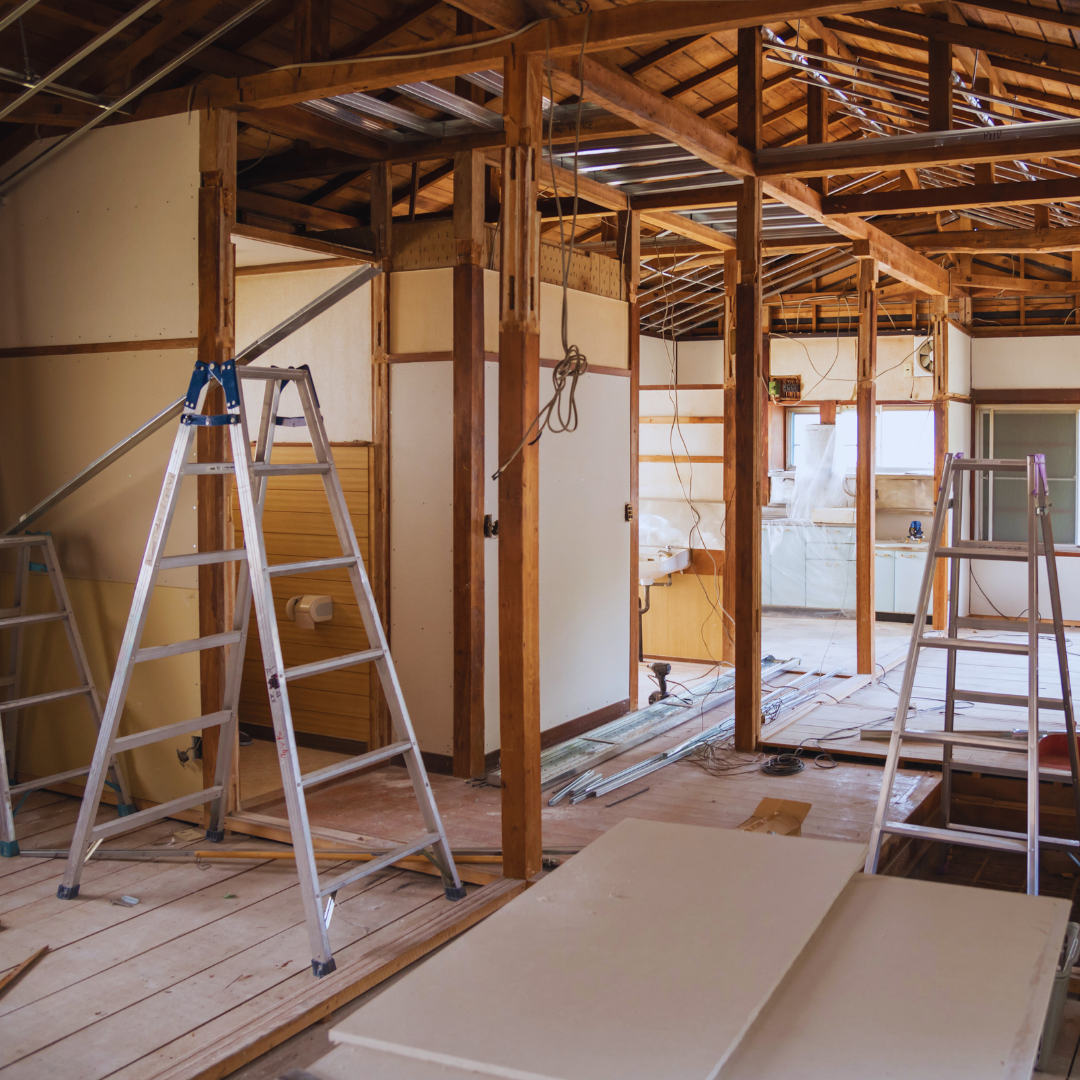Many homeowners embark on renovation projects with excitement and anticipation, but common mistakes can quickly turn dreams into headaches. Understanding potential pitfalls is crucial for a successful renovation, as it allows homeowners to preempt issues that could lead to wasted time and resources.
From budgeting miscalculations to neglecting permits, many oversight factors can derail a project. Planning and research are essential steps in avoiding these errors, ensuring a smoother process from start to finish.
By recognizing these common renovation mistakes early, homeowners can save themselves from costly adjustments and stress. Learning how to navigate these challenges not only enhances the efficiency of the project but also increases overall satisfaction with the end result.
Understanding Common Renovation Mistakes
Renovations can be complex, and many pitfalls can arise during the process. Recognizing frequent mistakes can help in planning and executing a successful project.
Overlooking Proper Planning
Failing to plan adequately is a common renovation mistake. Effective planning involves detailed timelines, specific goals, and clear prioritization of tasks.
Creating a comprehensive checklist is essential. This should include design ideas, materials needed, and contractor schedules.
Additionally, engaging in discussions with professionals from reputable home renovation companies like Yorkland Homes can help prevent oversights. They can provide insights on project scope and realistic timelines.
Ignoring Local Building Codes
Each municipality has specific building codes that must be adhered to during renovations. Ignoring these regulations can lead to significant penalties and delays.
Before starting any work, it’s prudent to research local codes. Homeowners should consult with local authorities or hire experts familiar with compliance issues.
Failure to secure necessary permits may result in costly rework or fines. Being aware of regulations ahead of time ensures harmony with legal requirements.
Underestimating Budget Requirements
Budgeting inaccurately is another common pitfall in home renovations. Many homeowners tend to underestimate costs, which can lead to financial strain.
To prevent this, it’s important to develop a detailed budget that includes all aspects: materials, labor, permits, and unexpected costs.
Setting aside a contingency fund is advisable. Typically, allocating 10-20% of the total budget for unforeseen expenses is practical.
Accurate budgeting eliminates last-minute financial surprises, ensuring smoother project execution.
Material Selection and Safety Considerations
Selecting the right materials is crucial in any renovation project. It not only impacts the durability and appearance of the space but also plays a significant role in ensuring safety throughout the process.
Choosing Low-Quality Materials
Opting for low-quality materials may lead to expensive repairs in the long run. While they often come at a lower price, their durability and performance are frequently lacking. This can result in premature wear, requiring further renovations sooner than expected.
High-quality materials are designed to withstand wear and damage, offering better long-term value. For instance, choosing solid wood or high-grade laminate for countertops can prevent issues like warping or cracking. Always research and invest in materials that meet safety standards and are suited for the intended use.
Make a list of essential features when selecting materials. Consider strength, weather resistance, and maintenance requirements. Quality products ultimately contribute to a safer and more pleasant living environment.
Neglecting Safety Precautions
Ignoring safety precautions can pose risks during renovation. Proper handling and installation of materials are paramount. For example, some paints and adhesives may emit harmful fumes. It is essential to read labels and follow safety instructions to prevent health hazards.
Using protective gear is another vital aspect. Items such as gloves, goggles, and masks help safeguard against injuries and exposure to hazardous substances. Ensuring proper ventilation during any renovation work is also critical for maintaining air quality.
Beyond PPE and ventilation, homeowners should also plan for worst-case scenarios by identifying a reliable emergency restoration contact before work begins. Professionals who offer fire water cleanup can respond quickly to limit structural damage, reduce the likelihood of lingering mold, and help coordinate with insurers when incidents occur.
Keep a short list of local providers and store their contact details with the project paperwork so one can act fast if needed. Photographing any damage and saving receipts will also streamline any insurance claims and repair coordination.
Also, inexperience can increase danger levels, especially with power tools. If unsure about handling certain tasks, hiring qualified professionals can mitigate risks. Establishing a safe work environment with clear guidelines will lead to a more successful home improvement project.
Project Management and DIY Pitfalls
Effective project management is critical in any home remodeling effort. Proper planning and understanding potential pitfalls can save time and resources. Specific challenges arise in DIY projects and when hiring professionals.
DIY Project Challenges
Many individuals underestimate the complexity of DIY projects. They may possess enthusiasm but lack the necessary skills or experience. Common issues include:
- Inaccurate Measurements: Mistakes in measuring can lead to costly errors.
- Lack of Planning: Failing to create a detailed plan can result in missing materials or unanticipated complications.
- Time Management: DIY projects often take longer than expected, creating frustration and stress.
Moreover, novices might overlook safety protocols, which can lead to injuries. It’s essential for DIYers to assess their capabilities realistically and to prepare adequately.
Failing to Hire Qualified Professionals
Opting not to hire professionals can lead to significant setbacks in home renovations. As refurbishment isn’t just about improving visual aesthetics, it’s also about enhancing privacy and safety. This is particularly important when working with features like windows. Choosing custom Window Shades can provide a personalized touch while maintaining both security and comfort.
Thoughtful decisions in these areas help create a home that feels not only uniquely yours but also well-protected. While DIY in such cases can be cost-effective, the savings might be negated by poor workmanship, security, or the need for repairs.
Some concerns include:
- Insufficient Expertise: Professionals bring knowledge of current building codes and standards.
- Quality Assurance: Experienced contractors ensure high-quality results and reduce the risk of future problems.
- Resource Availability: Professionals generally have access to better materials and tools.
Neglecting to consult experts can result in prolonged project timelines and increased costs. Investing in qualified help can mitigate risks, ensuring the project runs smoothly. Homeowners can consider hiring professionals from companies like Garman Builders, who tend to deliver high-quality workmanship, follow modern building standards, and provide the peace of mind that comes with working with experienced home builders.
Room-Specific Renovation Oversights
Renovation projects often lead to specific oversights that can impact functionality and aesthetics. Focusing on key areas, such as kitchen setups and other essential rooms, can enhance overall satisfaction with the finished results.
Kitchen Remodel Blunders
In kitchen renovations, planning is crucial. A common mistake is overlooking the kitchen triangle concept, which emphasizes efficient placement of the stove, sink, and refrigerator.
When choosing materials, failing to consider durability and maintenance can prove costly. For example, opting for low-quality cabinetry may save money upfront but lead to more frequent repairs.
Additional Considerations:
- Lighting Choice: Inadequate lighting can diminish a kitchen’s usability. Installing a mix of ambient, task, and accent lighting is vital.
- Storage Solutions: Neglecting proper storage options can result in clutter. Adding pull-out shelves or lazy Susans helps maximize space and accessibility.
Neglecting Essential Spaces
Often, smaller spaces like laundry rooms or mudrooms receive less attention during renovations. Ignoring storage and functionality in these areas can create organizational challenges later.
In laundry spaces, ensure adequate countertop space for folding clothes. Also, consider incorporating hampers or cabinets when designing the layout.
Key Tips:
- Ventilation: Proper airflow is necessary to prevent mold and mildew.
- Flooring Selection: Choose durable, water-resistant materials that can withstand daily wear.
Focusing on these areas not only enhances practical use but also elevates the home’s overall style.




